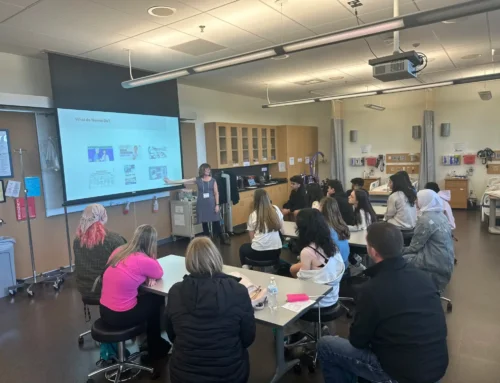I’m amazed at all the regional career connected learning opportunities that are available for students. With the recent enactment of legislation, I’m guessing you might have some questions for me and my coworker Bre Urness-Straight, who is the new Career Connected Learning Coordinator at the NWESD.
Here’s a quick review of recent legislation and how it may impact your students.
The state has removed the explicit link between the state assessment and graduation with the enactment of HB 1599. Starting with the class of 2020 students, must complete a High School and Beyond Plan (HSBP), earn 24 high school credits, and select one of the eight options available for earning a high school diploma.
These eight options include:
- Armed Services Vocational Aptitude Battery (ASVAB) Exam (NEW option)
- Sequence of Career and Technical Education (CTE) Courses (NEW option)
- Statewide Assessment (Scores in ELA and/or Math)
- College Admission Exam aka SAT/ACT (Scores for ELA and/or Math)
- Dual Credit Exam (Scores for ELA and/or Math) for Advanced Placement (AP), Cambridge International (CI) or International Baccalaureate (IB)
- Dual Credit Courses for ELA and/or Math offered through AP/CI/IB, Career and Technical Education (CTE), College in the HS (CHS), Running Start (RS) or other state-approved dual credit programs.
- High School Transition Course for ELA and/or Math (Bridge to College or BTC)
- Combination of graduation pathways for ELA and/or Math
However, it’s important to remember that it’s different for students who entered 9th grade during the 2016 – 17 school year (or this year’s juniors).
These students must:
- Fulfill the graduation requirements (both local and state) that are in place when they first entered 9th grade
- Develop a HSBP
- Complete one of the eight graduation pathways in alignment with their HSBP (NEW requirement)
- Earn 24 high school credits
What do these changes mean for your school and students? Well, in addition to completing a HSBP and updating it in 10th grade, all students will need to choose one of the eight pathways as part of their graduation plan. With the addition of two new pathways, students now have the option to use their interest in Armed Services or within a technically intensive and rigorous CTE sequence of courses.
The ASVAB Graduation Pathway
The State Board of Education (SBE) will be setting the minimum score for the ASVAB. What’s important to remember is that the intent is to align with military service requirements. The SBE will be updating the ASVAB cut score twice a year. These scores will be based on the lowest score required to enter into military service.
The CTE Graduation Pathway
Student career and college readiness is the focus of all eight graduation pathways. Students will use their HSBP and their postsecondary pathway to inform their choices and specifically what CTE pathway sequence they will complete in high school. These pathways must also allow students to earn dual credit or an industry recognized credential. Additionally, CTE courses must be career-connected with opportunities that lead to employment, postsecondary education and/or apprenticeships.
“The focus of my work is to support districts with Career Connected Learning and CTE Graduation Pathways. And to support the great work that is already underway to help students connect with careers and future opportunities.” – Bre Urness-Straight
Resources:




